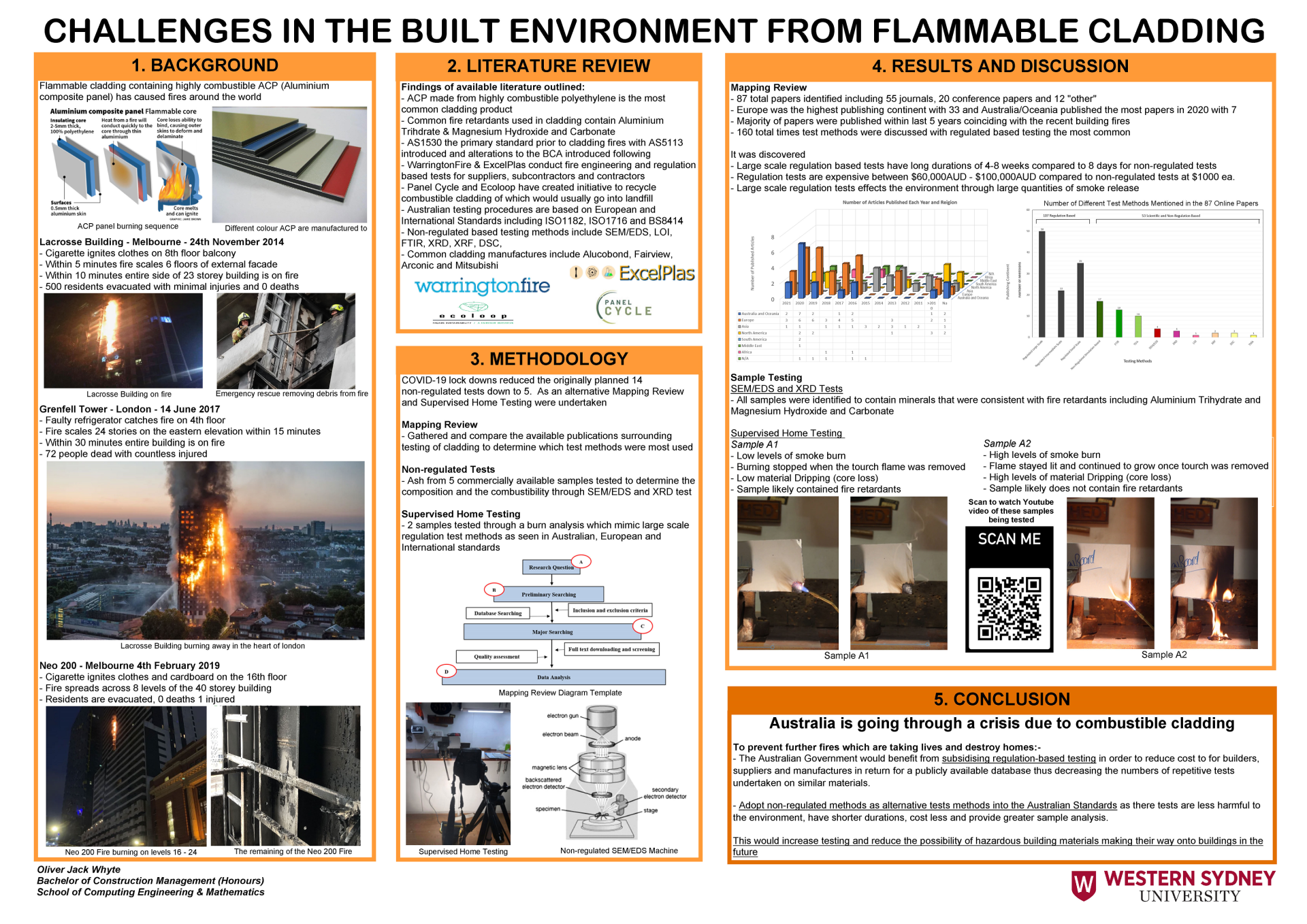
Oliver Whyte
Oliver studied a Bachelor of Construction Management at Western Sydney University and graduated with Class 1 Honours and University Medal in 2022. His interest in the construction industry drove him to further develop his knowledge through the honours program. As his understanding of the application of flammable cladding grew, he began to seek a deeper understanding of the topic due to its relevance in the construction industry. Oliver is currently working as a graduate in the commercial construction sector with Built.
Challenges in the built environment from flammable cladding
Flammable cladding has come under scrutiny over the last few years by government authorities, the building industry and the general public due to a number of deadly high-rise building fires around the world. Following investigations highly combustible ACP (aluminum composite panel) was identified due to the materials tendency to produce high levels of toxic gas and cause flames to spread rapidly. The research identified the history and characteristics of cladding materials. The findings presented that majority of Australian testing procedures and regulations are based on current British and European standards. Quantitative testing methodologies were produced through non-regulated based testing with four samples identified to likely contain fire retardant minerals unlike the cladding products responsible for the building fires around the world. Supervised home testing was also conducted on two residentially available products which mimicked large scale regulation-based test methods as seen in Australian and European standards. The tests simulated a typical building fire, with one of the cladding sample containing fire-retardants and therefore self-extinguishing while the other sample continue to burn and experience core loss as seen in the linked video. Due to COVID-19 restrictions a literature based mapping review complemented testing and compared the availability of 87 publications surrounding regulated and non-regulated test methods. The findings showcased Europe as the highest publishing continent, while Australia/Oceania published the most papers in a single year in 2020. Both continents produced the majority of their publications in the last 5 years, which coincides with the recent building fires. Furthermore, regulated based testing was the most discussed within the papers, with large scale test methods the most popular despite research highlighting their longer durations, increased test prices and increased harm to the environment compared to non-regulated based tests which are undertaken in a laboratory on a much smaller scale. The findings demonstrated the need for subsidisation of regulation-based testing to reduce cost for builders, suppliers and manufactures. Furthermore, by adopting a number of non-regulated methods as alternative tests into the Australian Standards, material testing would be less harmful to the environment, have shorter durations, cost less and provide greater sample analysis. This would ultimately increase testing and reduce the possibility of hazardous building materials making their way onto buildings in the future.

